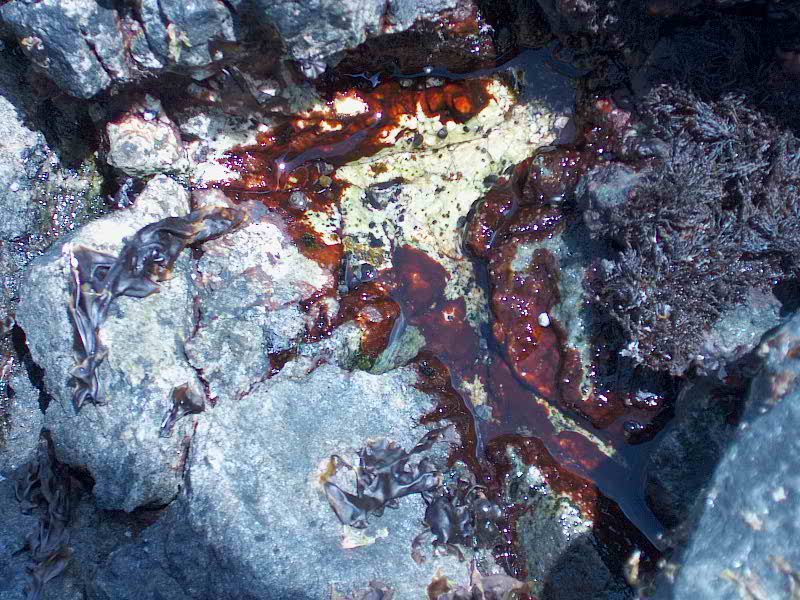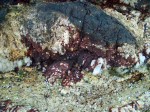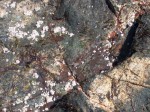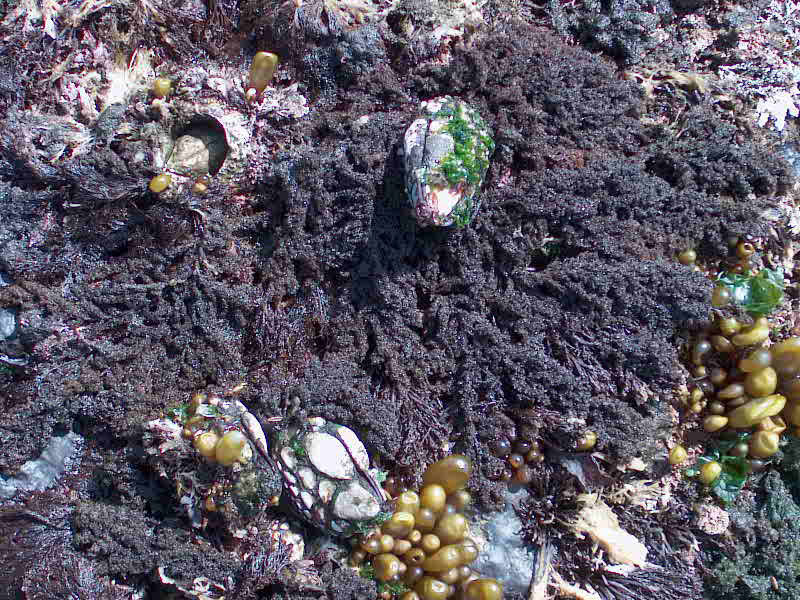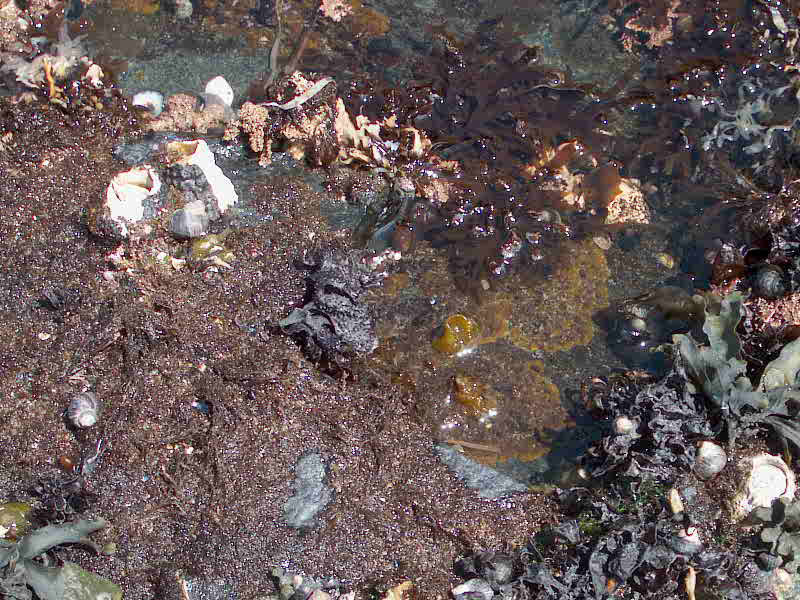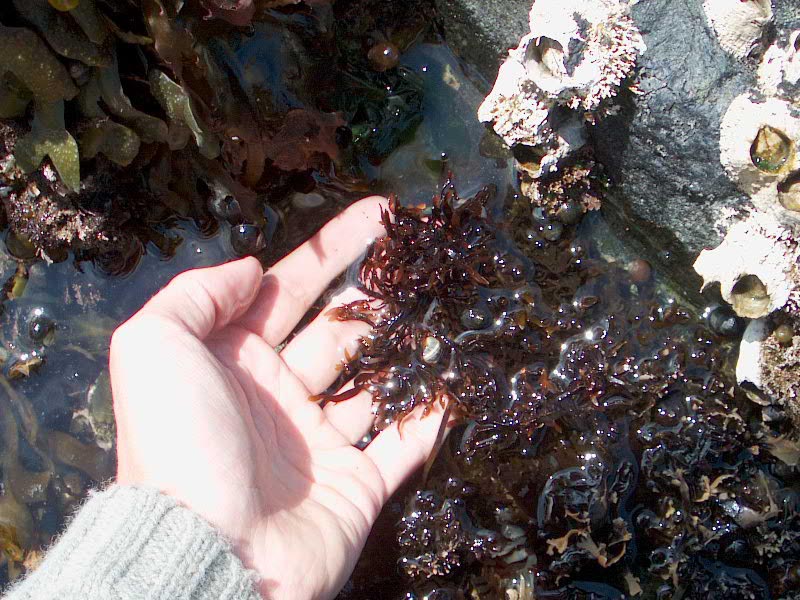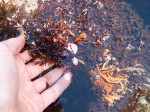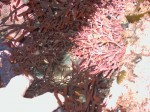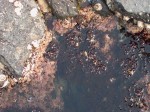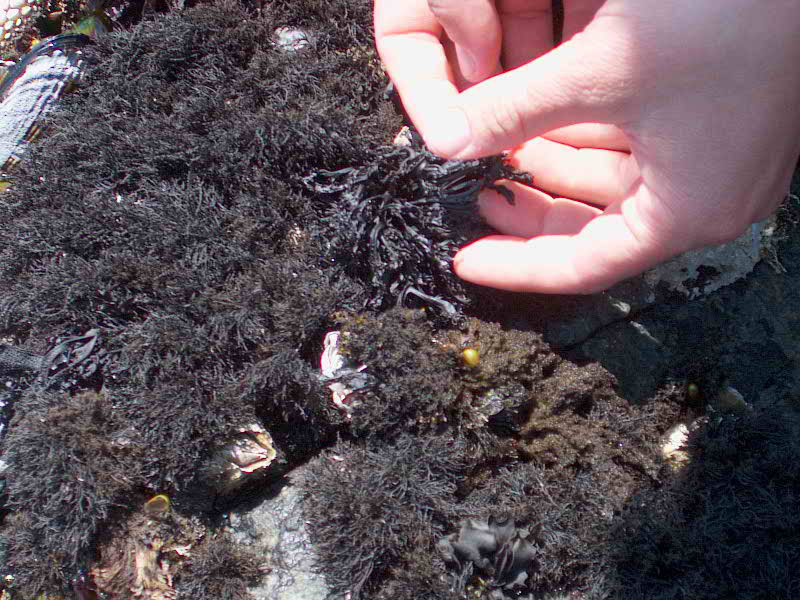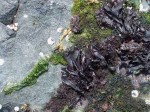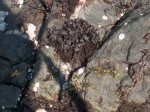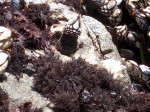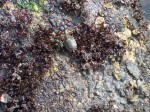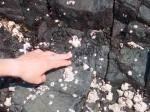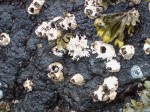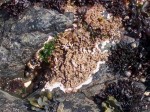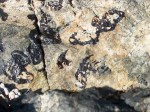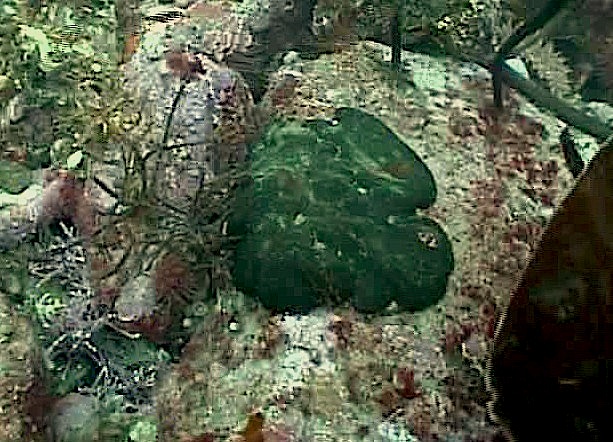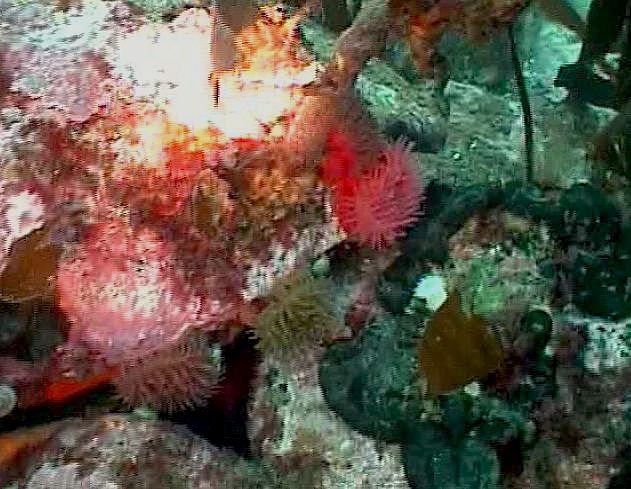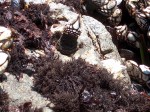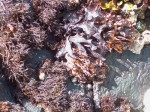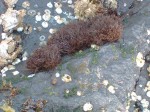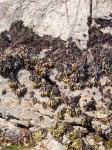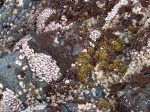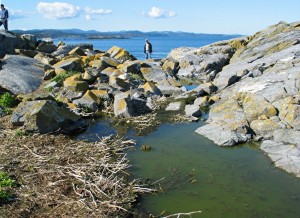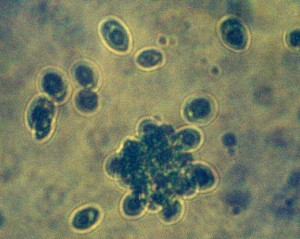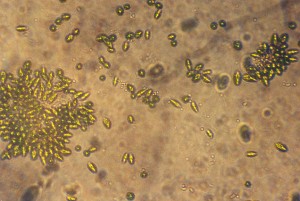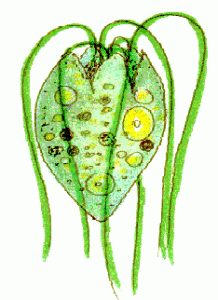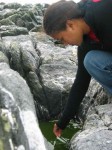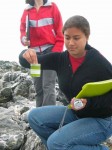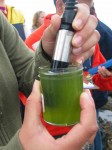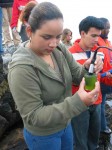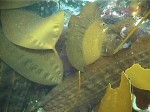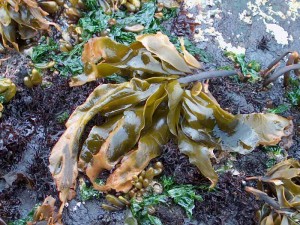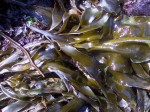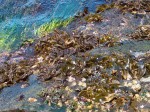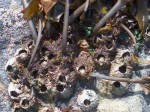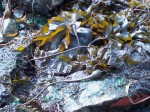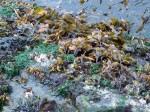The colonial marine bryozoan Membranipora serrilamella, formerly referred to as Membranipora membranacea. produces a planktonic larva that is encased by a triangular bivalved shell. Following a relatively long free-swimming phase, the larva settles as an epizootic colony on the blade of laminarians and other subtidal marine algae. It then undergoes a metamorphosis to become the sessile progenitor of the colony, referred to as the ancestrula”.
-

-
Still photos of Membranopora serrilamella
-
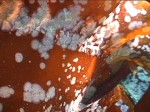
-
from the video.
Encrusting colonies are typically found on marine algae on the lower shore to shallow water. Found encrustating in kelps and other large seaweeds, especially common on the brown algae Laminaria, but can also be found growing in rocks, glass, floats or other.
Description: This epiphiytic bryozoan forms encrusting lacy matlike colonies of very small, rectangular aurozooids 0.42 x 0.13 mm. with tubercules or short spines in the corners. Each zooid has lateral calcified walls that contain ventral incalcified bands providing flexibility; A frontal membrane completely roofs the space between the supporting side walls with a lophophore (feeding tentacles) visible within. Tower zooids may also be present, where the frontal membrane projects upwards in a columnar way. Forms white, disc-like colonies, approx. 1 mm high and up to and over 100 mm wide. Zooids are rectangular and for together neatly in radially arranged rows that grow outward and branch into new rows as the pattern frows wider.
Additional information: Colonies may vary in size. Membranipora membranecea grows quickly (several mm/ day) in response to predation from sea slugs and in order to maintain its position on the kelp frond. Prolific growth is favoured by fast flowing water which provides food and oxygen. Egg production occurs once a year in the spring; the larva (cyphonautes) is planktotrophic and is the most abundant and largest coastal larva in Britain between June and August. The larva settles in late simmer-early autumn.
Natural history: Colonies are made up of hundreds or thousands of individual zooids, which are not much larger than a pond head. Their eight week growing season falls between late spring and early autumn. During this time, how they grow is dependent upon their success in the competition for space. The interaction between colonies can be cooperative to aggressive depending upon their size. Small colonies communicate by using electrical signals. Large colonies use runners called stolons from which new zooids bud from to mediate aggressive behaviors.
Domain- Eukaryota
Superphylum Prostomia
Phylum Bryozoa
Class Gymnolaemata
Order Cheilostomatida
Suborder: Malacostegina •
Family: Membraniporidae •
Genus: Membranipora de Blainville, 1830
species: M. serriamella
 The Race Rocks taxonomy is a collaborative venture originally started with the Biology and Environmental Systems students of Lester Pearson College UWC. It now also has contributions added by Faculty, Staff, Volunteers and Observers on the remote control webcams. -Ryan Murphy
The Race Rocks taxonomy is a collaborative venture originally started with the Biology and Environmental Systems students of Lester Pearson College UWC. It now also has contributions added by Faculty, Staff, Volunteers and Observers on the remote control webcams. -Ryan Murphy